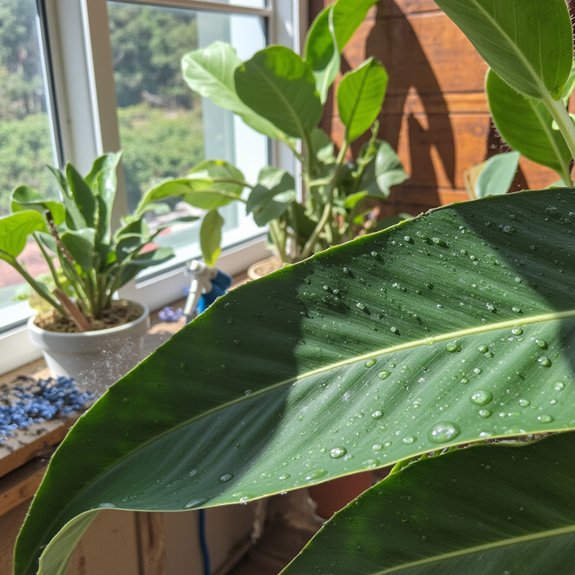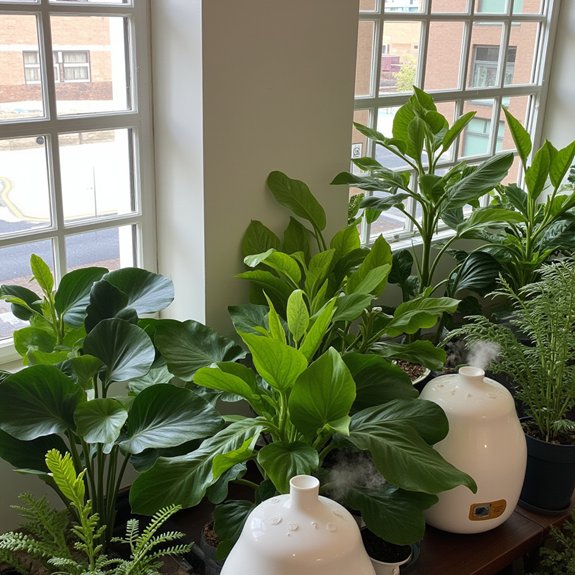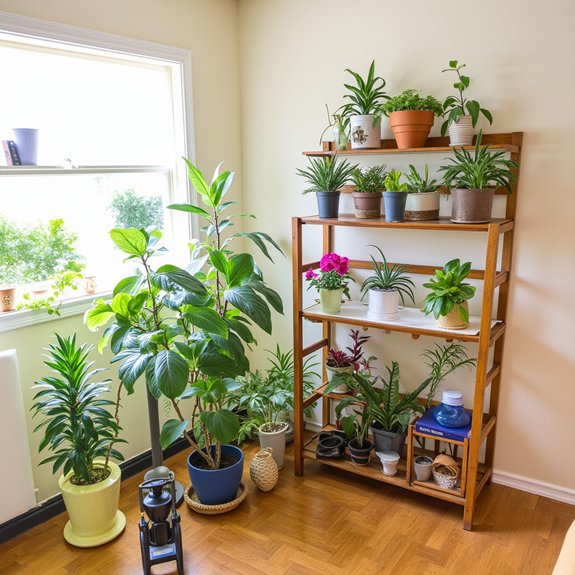Plant enthusiasts routinely debate whether misting houseplants creates beneficial humidity or invites trouble. Many gardeners grab spray bottles daily, believing water droplets mimic tropical conditions their plants crave. However, this seemingly helpful practice often backfires spectacularly. The temporary moisture boost lasts mere minutes, while wet leaves become breeding grounds for fungal infections and pest infestations. Understanding the science behind humidity reveals why consistent moisture matters more than quick sprays, and why alternative methods protect plants more effectively.

Contents
- 1 Understanding the Purpose and Effects of Misting
- 2 The Downsides and Risks of Misting Your Plants
- 3 Why Humidifiers Are a Better Choice
- 4 Creating Humidity Through Plant Placement and Pebble Trays
- 5 Optimal Room Selection and Plant Grouping Strategies
- 6 Best Practices for Maintaining Healthy Indoor Plant Environments
Understanding the Purpose and Effects of Misting

Many houseplant enthusiasts turn to misting as their go-to solution for boosting humidity around their green companions. This practice aims to replicate the high-humidity environments where tropical plants naturally thrive, often requiring 75% humidity or higher. When indoor humidity drops below 40%, plants experience leaf damage and stunted growth, making misting techniques appealing for dry homes.
While misting does add measurable moisture to the air, humidity measurement tools reveal a disappointing truth. The water vapor disperses quickly, providing only temporary relief. These short-lived effects mean plants don’t receive the consistent humidity they need for ideal health.
The Downsides and Risks of Misting Your Plants
Beyond these temporary benefits, misting creates several serious problems that can harm houseplants more than help them. The most significant misting risks involve persistent water droplets collecting on leaves, creating perfect conditions for fungal diseases like powdery mildew. These diseases damage plants and prove notoriously difficult to control once established.
Additionally, pest attraction becomes a major concern with regular misting. Fungus gnats thrive in the consistently moist environment that misting creates. The fluctuating humidity levels also stress plants, as they struggle to adapt to constantly changing moisture conditions around their foliage.
Why Humidifiers Are a Better Choice

While misting struggles with temporary effects and potential plant damage, humidifiers offer a superior solution for maintaining consistent humidity levels around houseplants. Humidifier benefits include steady water vapor production, creating optimal growing conditions without the risks associated with leaf moisture. Unlike misting’s brief humidity spikes, humidifiers deliver moisture consistency that tropical plants actually need.
Position humidifiers away from plant foliage to prevent excess water droplets on leaves. This strategic placement maintains ideal humidity while avoiding fungal issues. The consistent environment eliminates stress from fluctuating moisture levels, promoting healthier growth patterns throughout your plant collection.
Creating Humidity Through Plant Placement and Pebble Trays
Although humidifiers provide excellent results, gardeners can achieve meaningful humidity improvements through strategic plant placement and simple DIY solutions. Grouping plants together creates a micro-humid environment as they collectively release moisture through transpiration. Kitchens and bathrooms offer ideal locations due to consistent water sources, though lighting conditions require careful consideration.
Pebble trays provide another effective method for individual plants. Fill a shallow tray with pebbles, add water without touching the pot, and let evaporation work naturally. This setup offers modest humidity boosts around specific plants, making it perfect for targeted care in dry environments.
Optimal Room Selection and Plant Grouping Strategies

Where should gardeners position their plants to maximize humidity benefits without sacrificing plant health? Bathrooms and kitchens offer naturally higher humidity levels due to consistent water sources from showers, sinks, and cooking activities. However, these humid rooms often lack adequate lighting, which can severely limit plant growth and photosynthesis.
When grouping plants together, consider plant compatibility to guarantee similar care requirements and humidity preferences. Monitor grouped plants closely for pest infestations and diseases, as these problems spread quickly in crowded conditions. Ascertain proper airflow between leaves to prevent fungal issues while maintaining beneficial increased humidity levels.
Best Practices for Maintaining Healthy Indoor Plant Environments
Creating a thriving indoor plant environment requires monitoring several interconnected factors that work together to promote ideal growth. Regular humidity checks using digital meters guarantee levels stay between 40-60% for most houseplants. Proper airflow prevents stagnant conditions that encourage fungal problems while supporting plant health through consistent air circulation.
Moisture retention strategies should focus on soil consistency rather than leaf surface water. Water thoroughly when the top inch feels dry, allowing excess to drain completely. Group plants strategically near natural light sources, maintaining 12-18 inches between specimens to prevent overcrowding while creating beneficial microclimates for sustained humidity.
